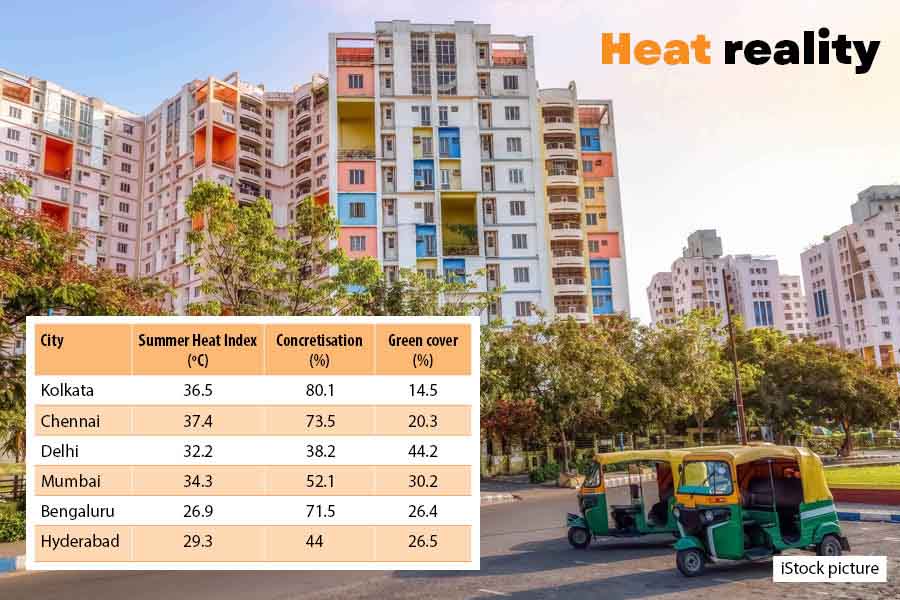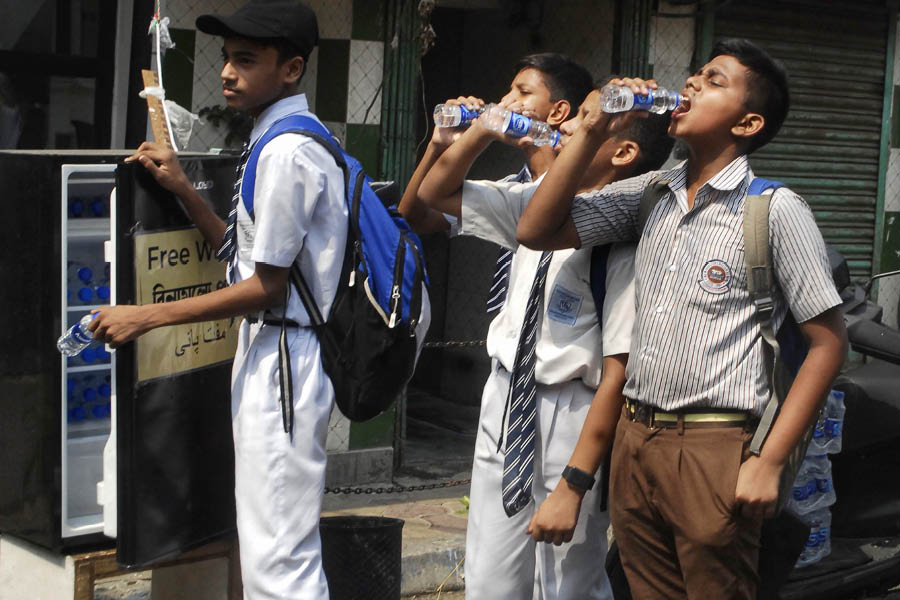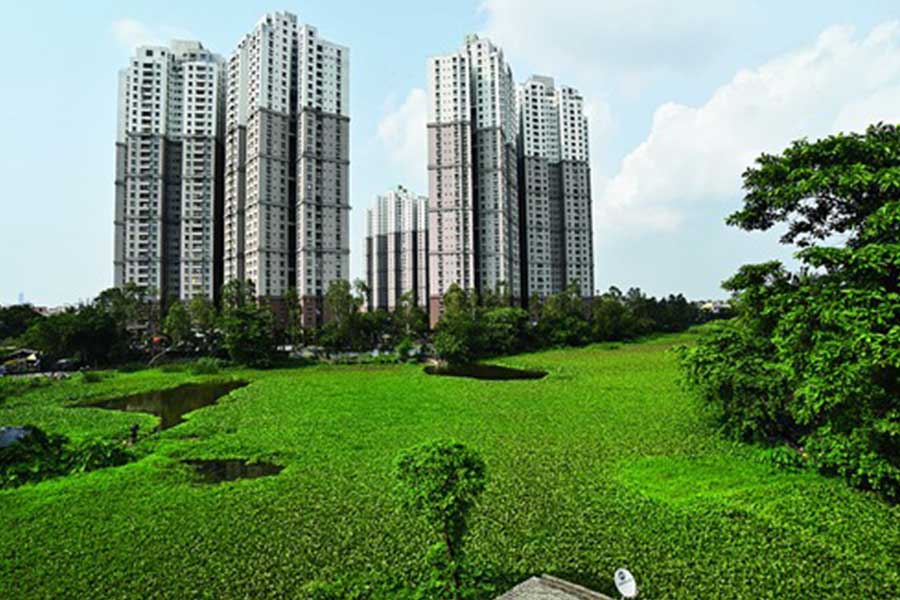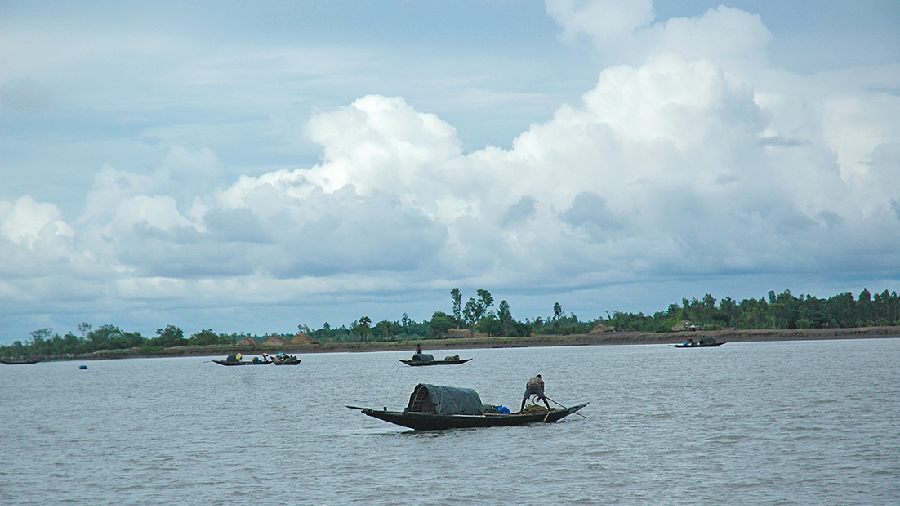Kolkata’s summer-time heat index — the temperature felt on the human body owing to the combined effect of air temperature and relative humidity — was only second to Chennai in 2023 among all metro cities, according to a study carried out by a premier environmental research organisation. The culprit — high relative humidity.
The study carried out by the Centre for Science and Environment (CSE) in six metro cities considering database from 2001 to 2023 points out that a high level of concretisation and low proportion of green cover in Kolkata — 80.1 and 14.5 percent respectively — are responsible for rising summer heat index in the city. Both the figures are the worst among the metro cities, as recorded in 2023.
Kolkata, which is suffering from another round of hot spell after April, has been affected by high humidity, confirmed the experts of the Indian Meteorological Department. “The high humidity this month is mainly responsible for the rise in heat-related discomfort. The temperature was much higher last April but the humidity was comparatively less,” said a senior official of IMD, Alipore, on Thursday. “With rain in north Bengal and moisture in the air of south Bengal, humidity is increasing and pushing up the real feel of heat,” the official added.
Experts predict a bleaker future. “There is a high probability of increase in heat in July as well once monsoon sets in properly and humidity increases, pushing up the heat index values,” said Krishna Achuta Rao of Centre for Atmospheric Sciences, IIT Delhi during a heatwave-related meeting in Chennai organised by Climate Trends.
Core Kolkata 1.8ºC warmer than periphery on summer days
Kolkata’s average summertime temperature has risen by 0.2 degree Celsius during the last decade compared to 2001-10, behind the 0.5 degree Celsius rise recorded in Mumbai, Bengaluru and Chennai; but relative humidity has increased significantly.
“Kolkata’s summer has registered insignificant change in decadal average ambient air temperatures but the relative humidity has increased by 5 per cent between 2001 and 2010 and between 2014 and 2023,” reads the study anchored by environmentalist Anumita Roy Choudhury from CSE.
The report says that in city “decadal heat index has risen by 3.5 per cent on an average (and) days with daily heat index exceeding 41 degree C (danger mark) have trebled compared to 2001-10,” further pointing out that monsoons in the city are turning out to be “thermally uncomfortable than pre-monsoons” with higher heat index.
“We have found that during daytime, core Kolkata is 1.8 degree warmer than its peripheries, while the difference, at night, is only 1.2 degree, a tell-tale evidence of urban heat island effects,” explained Roy Choudhury.
Urban heat islands are areas that experience higher temperatures than outlying areas as structures such as buildings, roads and other infrastructure absorb and re-emit the sun’s heat more than natural landscapes such as greeneries and water bodies.
Least greenery & highest concretisation make lethal combo

The study pointed out a clear correlation between increase in built-up area and decline in green cover with the rise in Kolkata’s heat stress, adding that ‘built-up area has increased from 70 per cent to 80.1 per cent in 2023, (while) green cover has decreased from 15.2 per cent to 14.5 per cent in 2023”.
“All megacities have become more concretised in the past two decades. However, Kolkata had the highest percentage of land under concrete and the lowest green cover in 2023 among the megacities maximising the heat impact,” explained Roy Choudhury.
Sometime back, ‘Assessment Report 6’ (AR 6) prepared by the IPCC, a UN body comprising nearly 3,000 scientists, had pointed out that Kolkata may experience a 4.5 degree Celsius rise in annual mean temperature in 2081-2100 compared to the pre-industrial period (1850-1900) under the worst possible greenhouse gas emission scenario, while the city may experience a temperature of 35°C or more for 150 days a year by the end of the century.
“We can say with high confidence that extreme heat and heatwave phenomena are going to increase,” said Subimal Ghosh, scientist, Indian Institute of Technology, Mumbai. He is among the lead authors of the latest Intergovernmental Panel for Climate Change (IPCC) report. “Kolkata definitely needs a heat action plan as early as possible” added Ghosh.


